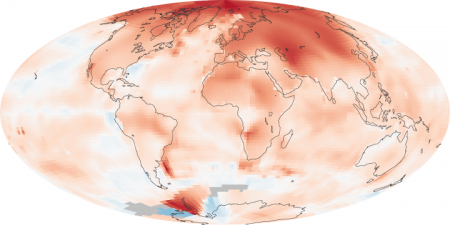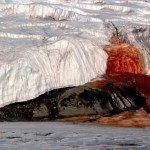
NASA’s Earth Observatory is not only a great place for pictures from space, it also posts regular scientific updates, including the most recent map of the change in temperature since 1980.
The most obvious observation from the map is that the poles are warming faster than the rest of the planet, especially the North Pole. This is a pattern that has been predicted since at least the 90’s, so the temperature observations tend to show that the scientists and computer modelers who do this research may just know what they’re doing.

It’s also important to note that the Antarctic is not warming nearly as fast as the Arctic. The continental glaciers that would most significantly raise sea level (think 10’s of meters) are in Antarctica.

The northern hemisphere warming will likely be difficult for a number of species to deal with. Polar bears, the charismatic megafauna (I love that term) most associated with the effects of the melting Arctic sea-ice, are still in big trouble. Recent research, however, suggests that if something can be done to reduce global warming in the coming century, there will remain places with enough ice that the species may survive.
Update: Interesting article on global warming science and politics in the NY Times. It starts off talking about David Keeling, the scientist who came up with a reliable way to measure atmospheric carbon dioxide.